
- gaster constricted between segments
- body coarsely sculptured
- ocelli normal
- 3 submarginal cells in forewing; SCII nearly always petiolate (as here)
- pronotal collar short
- first gastral segment usually pedunculate (sometimes a narrow petiole)

- body coarsely sculptured
- head wide
- eyes widely separated
- ocelli normal
- 3 submarginal cells in forewing; SCII nearly always petiolate (as here)
- pronotal lobe & tegula separated

- head wide
- eyes widely separated
- eyes slightly (as here) or strongly converging above
- antennal sockets divided by a strongly raised ridge
- clypeus trilobed (although not always as obviously as in this species), with the median lobe extending upwards and truncate a short distance below antennal sockets

- gaster constricted between segments
- body coarsely sculptured
- head wide
- hind femur apically expanded, truncate
- gaster pedunculate or petiolate; T1 much narrower than T2

- gaster constricted between segments
- body coarsely sculptured
- head wide
- 3 submarginal cells in forewing; SCII nearly always petiolate (as here)
- well-defined pygidial plate

- gaster constricted between segments
- hind femur apically expanded & flattened

clypeal lamina of female
In Cerceris, the clypeus is trilobed (L= lateral lobe; M = median lobe).
The clypeal lamina of the female is a plate-like elevation arising from the median lobe. It varies significantly in different species, and is therefore of considerable diagnostic value.
In this species, Evans (1982) describes the clypeal lamina as “recumbent, nearly as wide apically as median lobe” (p. 357).

clypeal lamina of female
Evans variously describes the clypeal lamina as porrect, subporrect, subrecumbent, recumbent, or absent. These categories are not absolute, and I find the distinction between subrecumbent and subporrect can be quite tricky. But they are useful descriptors (see illustrative figures extracted from Evans, included in the ‘Bits & pieces’ section of this page).
A lateral or near-lateral view is helpful in assessing the shape of the clypeus in detail.
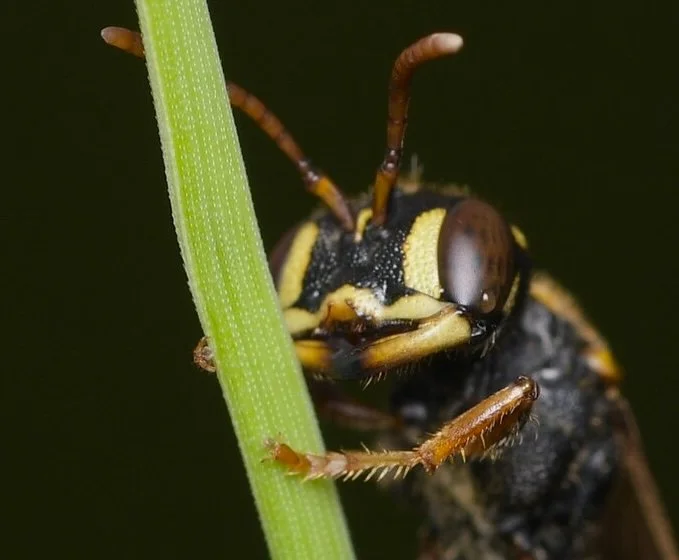
clypeal lamina of female
In addition to the angle of the lamina (porrect, recumbent, etc), some are distinctively shaped and/or bear prominent teeth.
https://inaturalist.ala.org.au/observations/267493072
(image courtesy of Nick Lambert)

clypeal lamina of female
The clypeal lamina can be quite extraordinary, as highlighted here. This museum specimen was identified by H. Evans as Cerceris aurantiaca, and he describes the clypeus as follows:
“clypeal lamina much longer than wide, porrect but strongly curved downward, apex truncate”
Image kindly provided by Dr Ben Parslow, Collection Manager, South Australian Museum (SAMA)

male clypeus
Male Cerceris lack the clypeal lamina, but the trilobed shape of clypeus is usually evident. The median lobe typically has 3 small apical teeth or may be truncate.
Males also typically have obvious ‘hair brushes’ (arrows) on the apex of the lateral lobes.

mandibles
The shape of the mandibles varies considerably between Cerceris species, but they are subject to wear so interpret with caution. For example, this female photographed in February has extremely eroded mandibles. Cerceris females can live for months, and their mandibles do a lot of digging in that time.
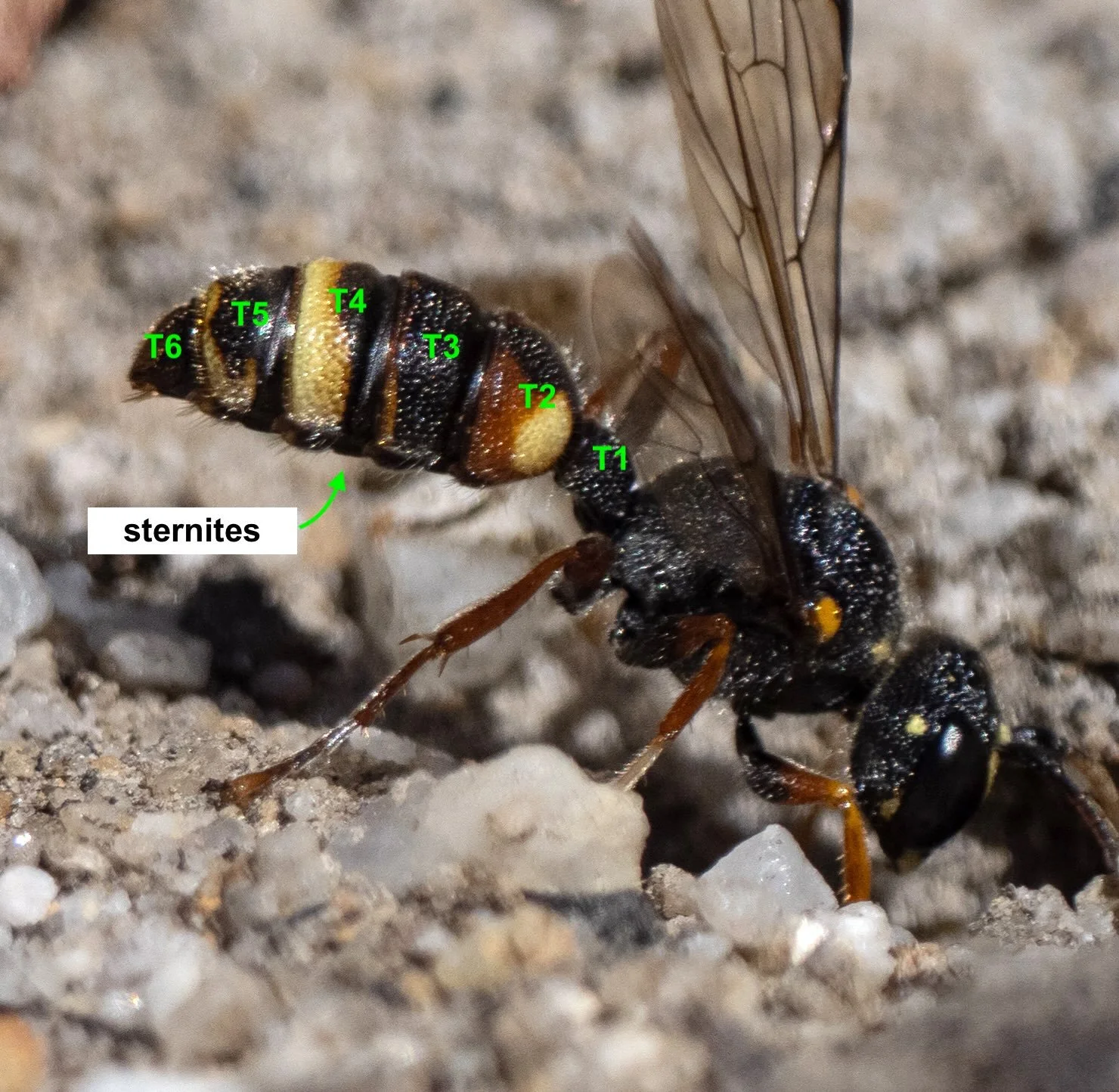
metasoma colour
The colour pattern of the metasoma is remarkably diagnostic. This is particularly true for the colour of tergites (T1/petiole – T6 above). Note that the tergites are visible in dorsal and lateral views, as they wrap well around the segments. The corresponding sternites are best seen in a ventral view, and as such are less often captured in field photos.
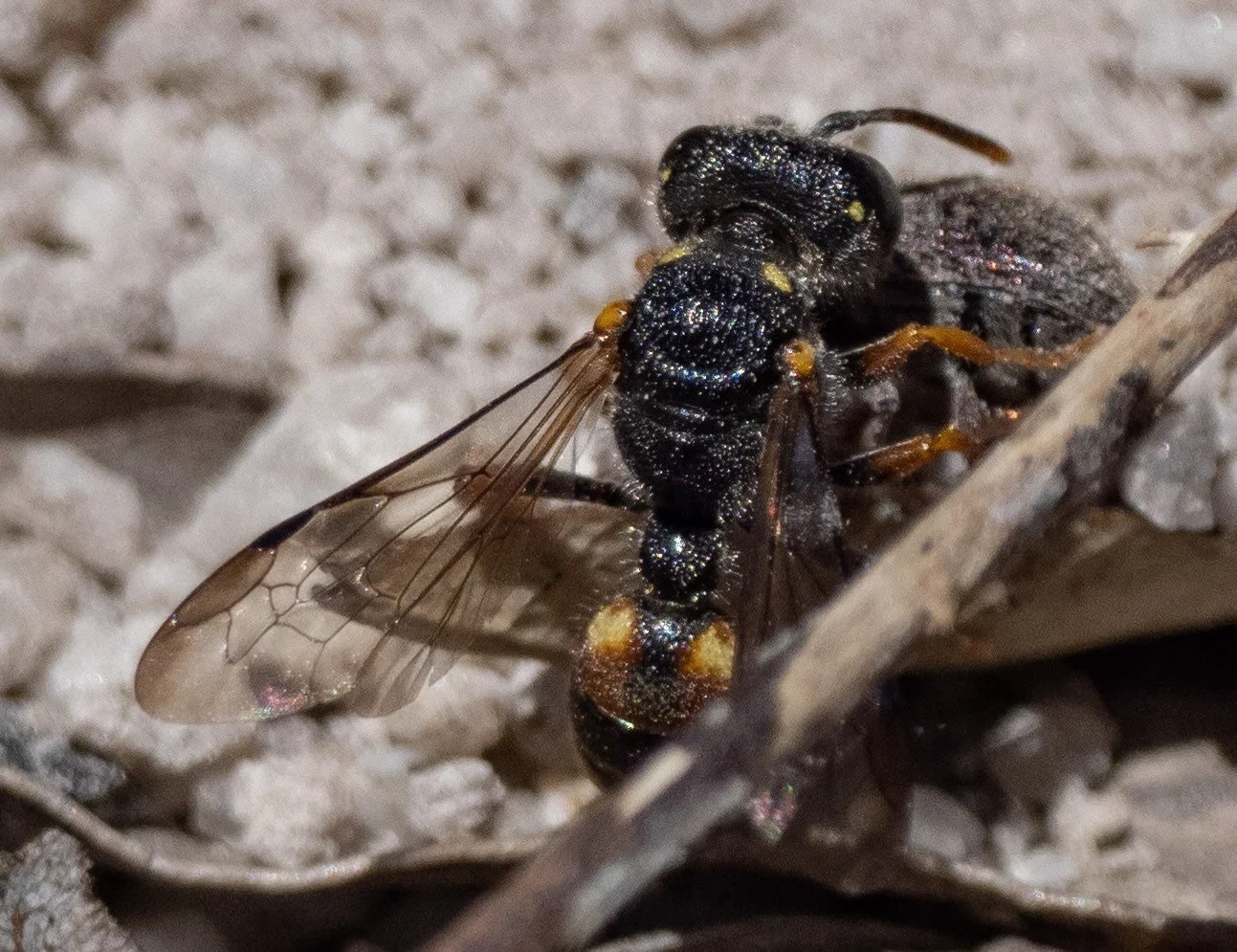
colour pattern
C. antipodes is a particularly widespread species, and is one of the most variable in terms of colour pattern. Despite this, the large, yellow, anterolateral spots of T2 are diagnostic.
Note that in this example, the spots are surrounded by a reddish-brown colour.
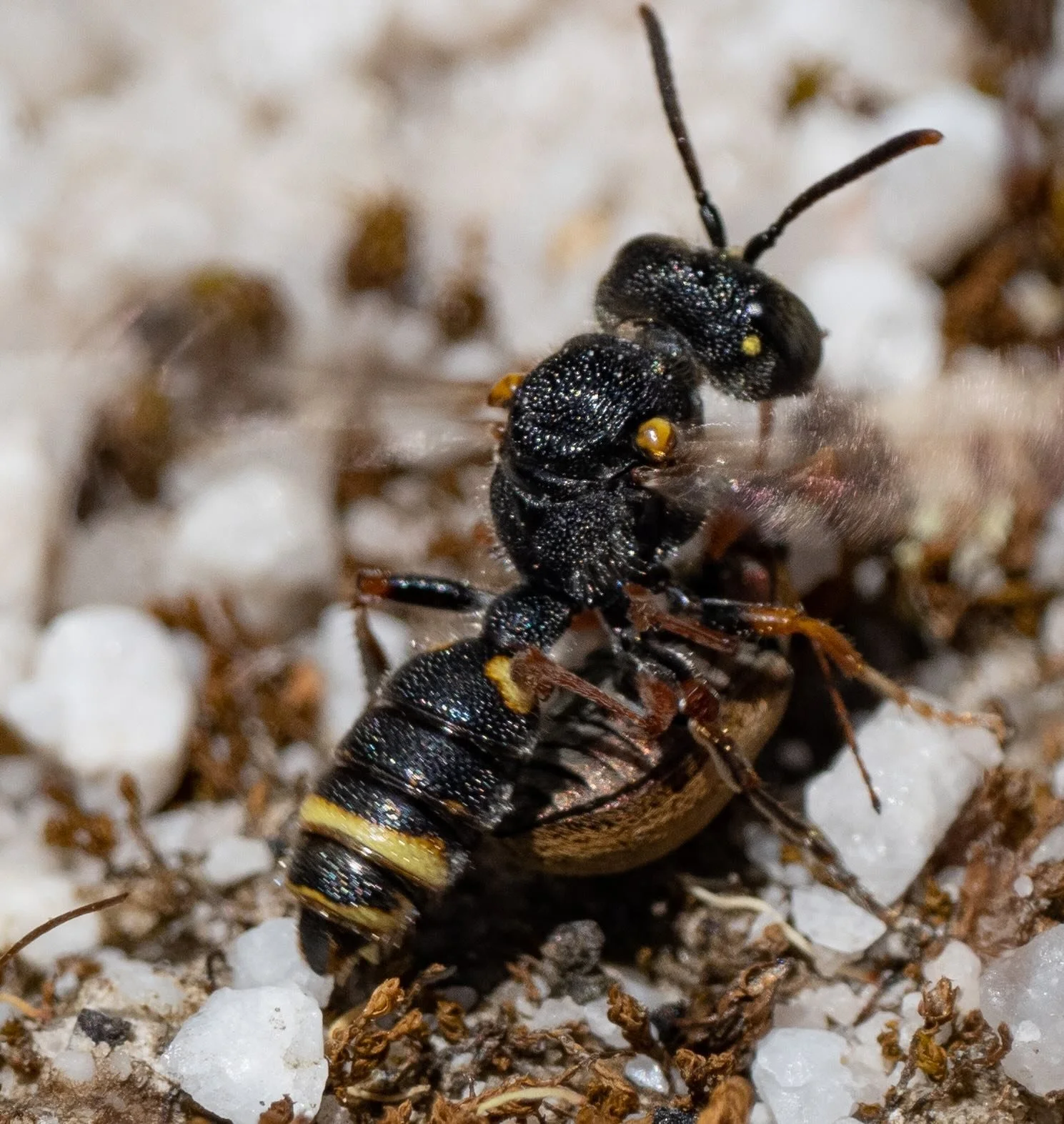
colour pattern
The extent of melanisation (‘blackness’) is a common contributor to intraspecies colour variation.
Compare T2 in this individual with the previous image. The yellow anterolateral spots are present, but otherwise T2 is entirely black. Note also the absence of yellow spots on the pronotum.
Different colour morphs can tend to reflect location. For example, Evans states that southern populations of C. antipodes tend to be darker than those from northern NSW and southeast QLD.
Colour often also varies within populations. These two wasps were part of the same nesting aggregation … observed at the exact same location, just a couple of weeks apart.

C. antipodes
Male Cerceris are typically smaller than their female counterparts. They can be recognised by the additional visible tergite (T7), although it is often small, and by the number of antennal segments (a total of 13, rather than 12).
The colour pattern of males typically differs somewhat from the female. For example, in southern C. antipodes males the anterolateral spots of T2 are typically large and medially joined to form a continuous basal band.
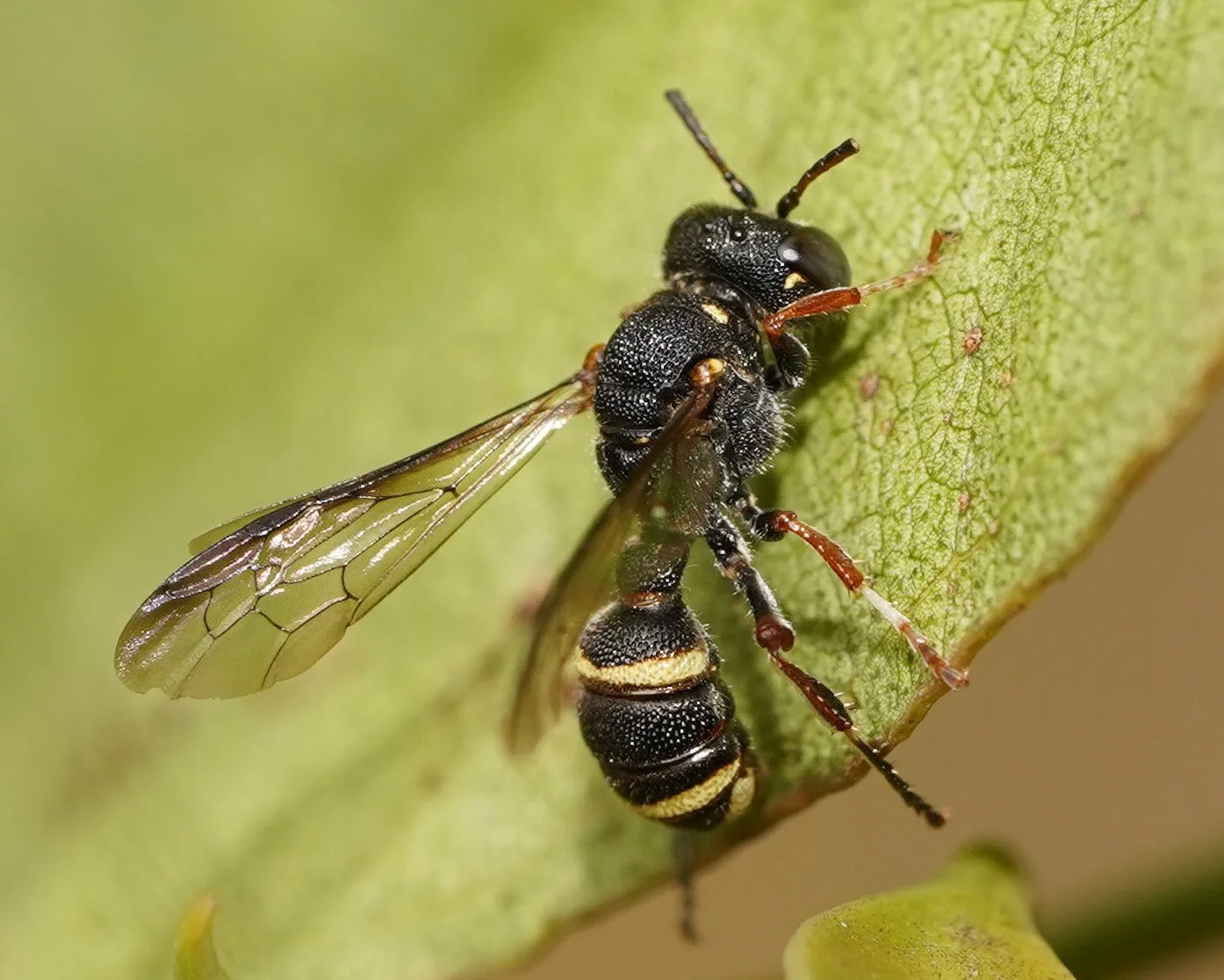
C. opposita
A dark-looking wasp with limited yellow markings, reasonably common in southeastern Australia.
- note T2 has yellow spots or a band in the apical (posterior) third (in contrast to the anterolateral markings of C. antipodes)
https://inaturalist.ala.org.au/observations/39041814
(image courtesy Reiner Richter)
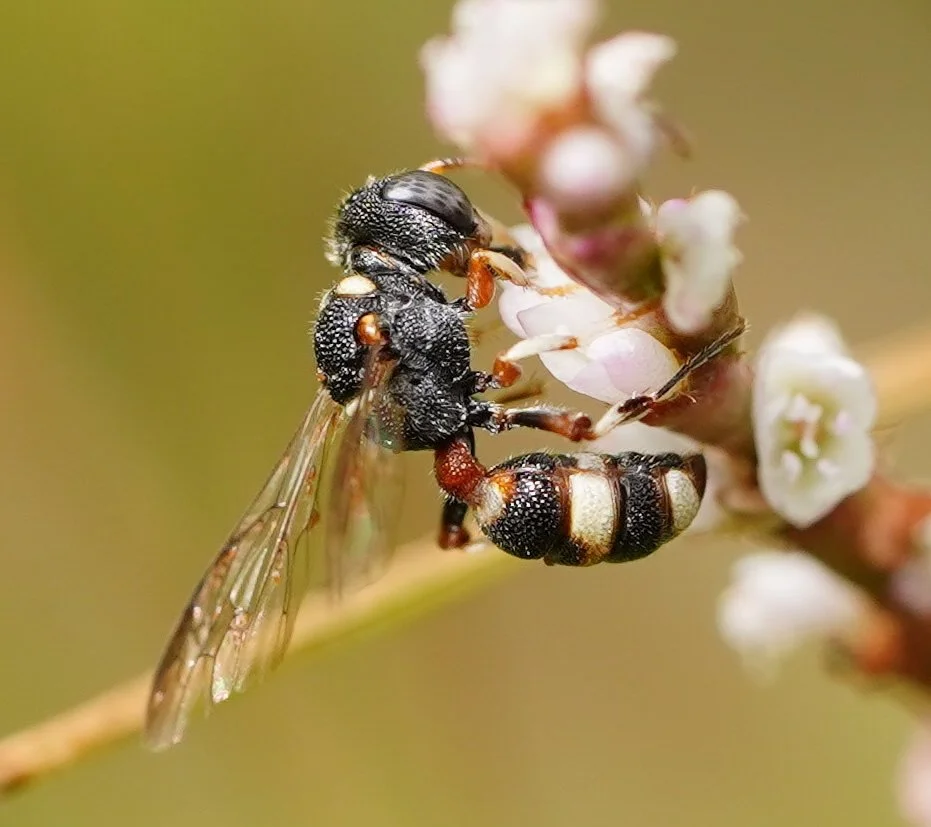
C. minuscula
The most widespread of any Australian Cerceris – all mainland states & territories. Note that no Cerceris are known from Tasmania.
- very small (forewing length just 5mm)
- petiole red (not unique, but very unusual)
- T3 pale, with mediobasal black wedge (usually)
https://inaturalist.ala.org.au/observations/70806099
(image courtesy Reiner Richter)
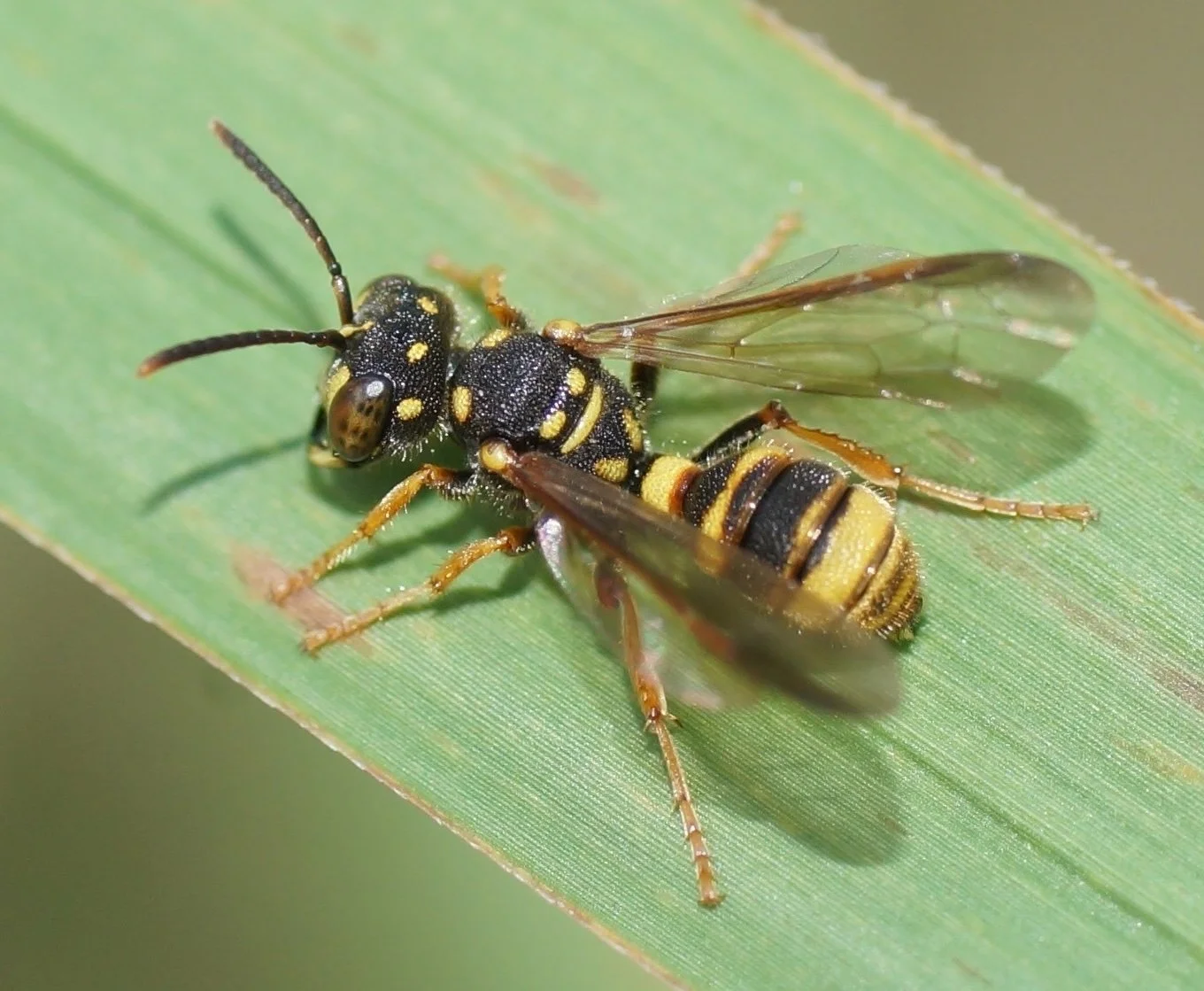
C. goddardi
Placed in the same species group as C. antipodes and C. australis, and so similar in several structural features. However, the colour pattern (while variable) is quite distinctive … and the female has a particularly broad head.
Note that the petiole is extensively yellow, although black basally and often with some red (as here). T2 has a yellow band just before the posterior margin, which extends to include the lateral margins.
https://inaturalist.ala.org.au/observations/15207162
(image courtesy Reiner Richter)
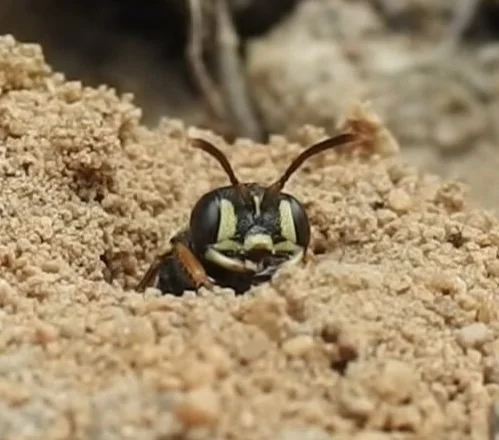
C. goddardi
The female of this species has a particularly broad head, the eyes divergent below.
The clypeus has a subrecumbent lamina, but it is “broadly incomplete” medially, with the sides curved “mesad and upward”. Viewed from above (or indeed head on, as here), it looks to have a pair of small teeth projecting from the apex of the lamina.
https://inaturalist.ala.org.au/observations/321974098
(image courtesy Scott Gavins)
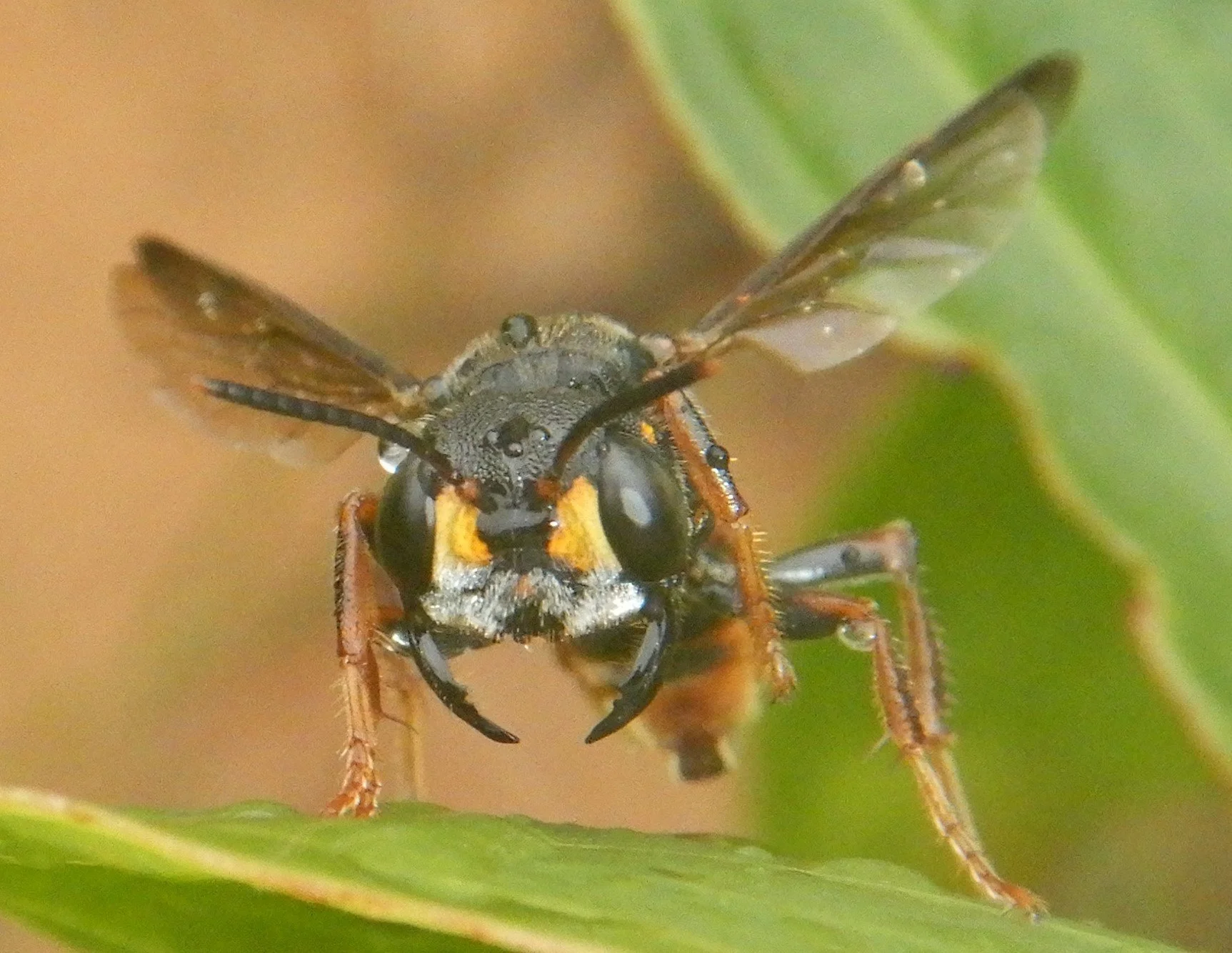
C. froggatti
The largest of the Australian Cerceris.
- black mandibles & black-brown clypeus
- no clypeal lamella, but there is a pair of tubercles in the centre of the median lobe (not visible here through dense silvery pubescence)
- eyes strongly divergent below
https://inaturalist.ala.org.au/observations/103879235
(image courtesy Donna Maree Tomkinson)
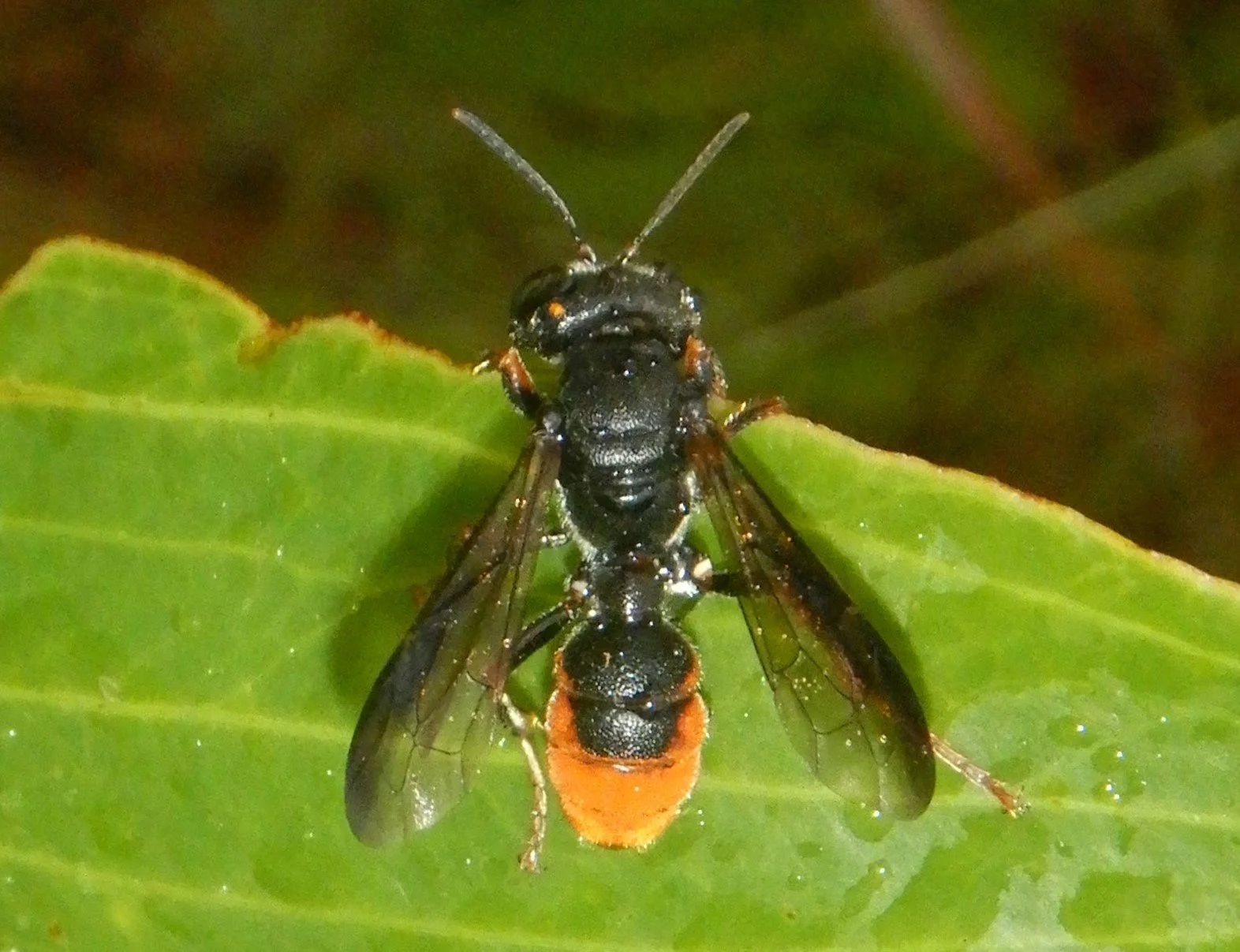
C. froggatti
This species is reasonably common but with an apparently limited range: central NSW through to just north of the Tropic of Capricorn, QLD.
Note:
- the distinctively marked metasoma, including: petiole black; T2-3 black with orange markings latero apically, those on T3 more broad; T4-6 orange
-forewings wings darkened along costal (leading) edge
- petiole particularly wide, & convex both laterally and dorsally
https://inaturalist.ala.org.au/observations/103879235
(image courtesy Donna Maree Tomkinson)
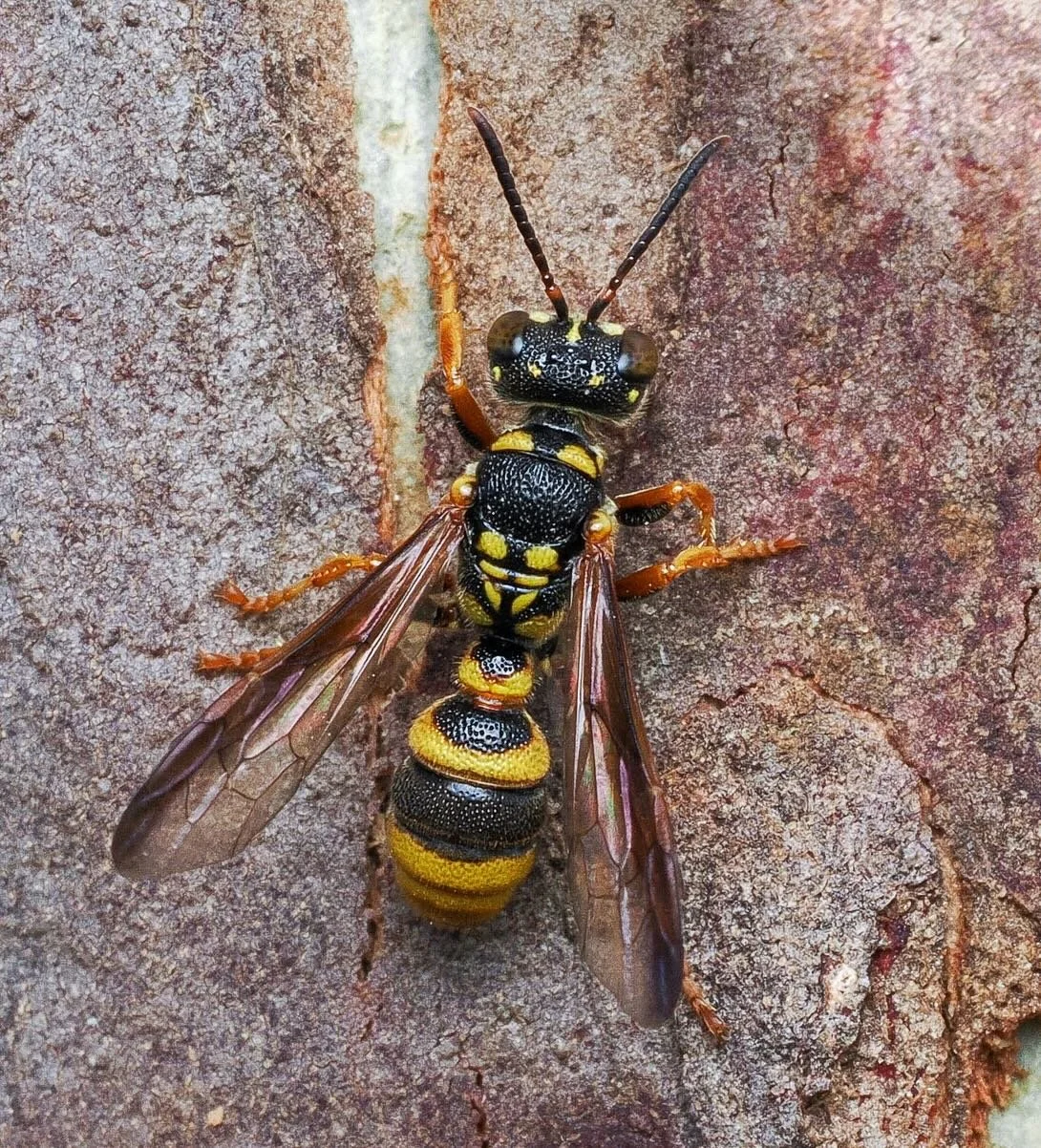
C. multiguttata
- diagnostic colour pattern on the polished enclosure (ie the dorsal triangle) of the propodeum … it is yellow laterally, black medially and basally
- metasoma colour pattern is also distinctive: the petiole yellow but black on basal third; T2 yellow but with a large, mediobasal black spot; T3 black; T4-5 yellow
https://inaturalist.ala.org.au/observations/246741066
(image courtesy Ged Tranter)

C. australis
An abundant and widespread species throughout eastern Australia. The colour varies in both hue and extent: from yellow to orange; some individuals extensively marked, others far less so.
Compare this male from north NSW with the following one from central Victoria. Note differences in the colour of the petiole and overall hue of the markings.
However males consistently have T2 yellow & T3 wholly (or almost wholly) black.
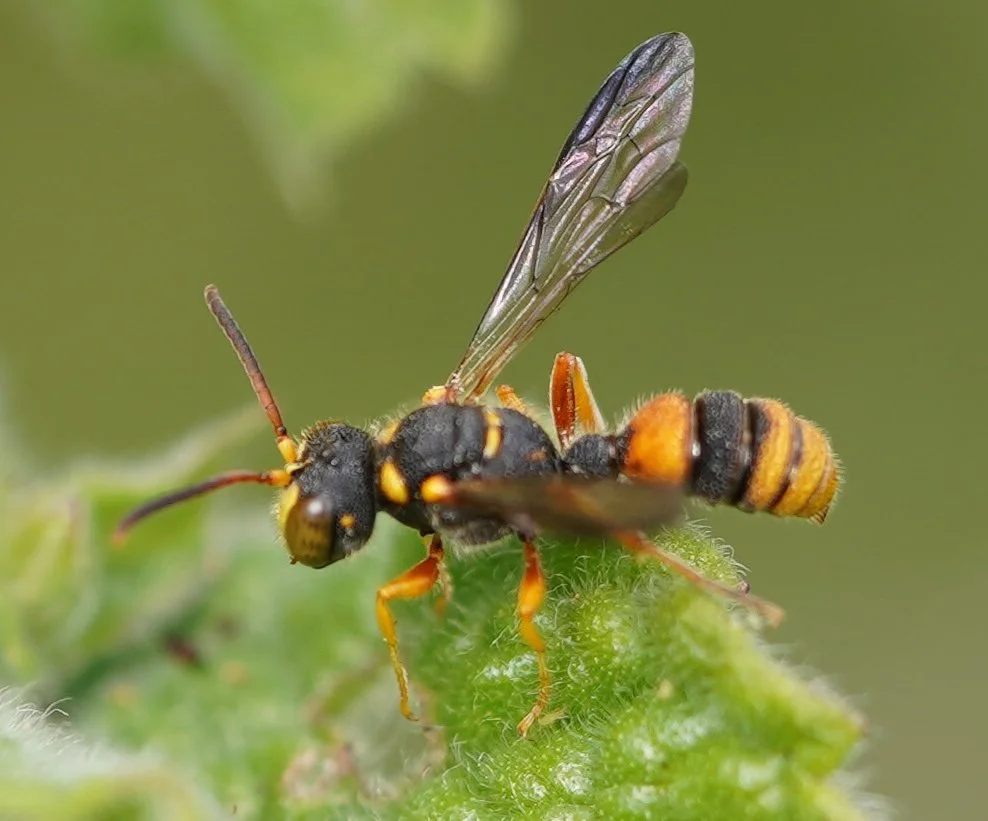
C. australis
In comparison to the previous example of C. australis, note the all-black petiole and deeper orange hue of the metasomal markings (particularly T2).
https://inaturalist.ala.org.au/observations/150642673
(image courtesy Reiner Richter)

C. gilesi
This species is only known from Western Australia, and therefore did not feature in Evans’ 1982 revision. I have included it in the summary table (matrix), along with two other species known from the west. This one is such a good match with the original description that I feel comfortable suggesting the ID … despite no recent review of western Cerceris.
- distinctive colour pattern, with bright reddish-orange markings including T1, T2 and T5 …. but with T3 & T4 black
https://inaturalist.ala.org.au/observations/163623099
(image courtesy Steve Dew)
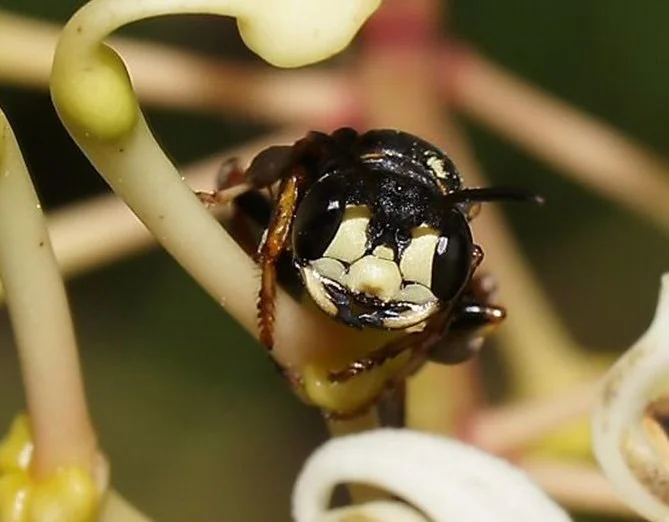
C. balteata
The clypeus in this species is quite striking. The median lobe lacks a lamina, but has a rather ‘nose-like’ projection. Evans described the median lobe as “elevated, then abruptly declivous and weakly concave on apical 0.4” (1982, p9 314-5). Yep … a nose!
(see also Fig. 71 in the Bits & Pieces section below)
https://inaturalist.ala.org.au/observations/25743224
(image courtesy Reiner Richter)
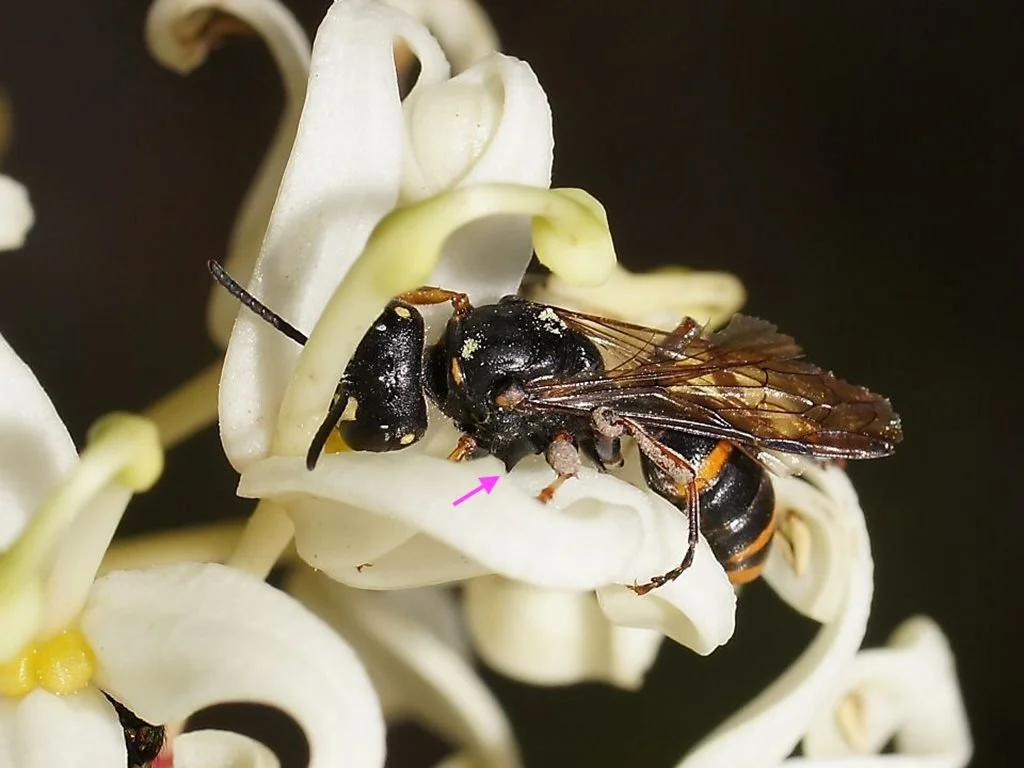
mesopleuron shape
In most Australian Cerceris the mesopleuron is rounded in shape. However, in a few species the lower part bears small tubercles or even large spines … as here (arrow).
https://inaturalist.ala.org.au/observations/25743224
(image courtesy of Reiner Richter)




























